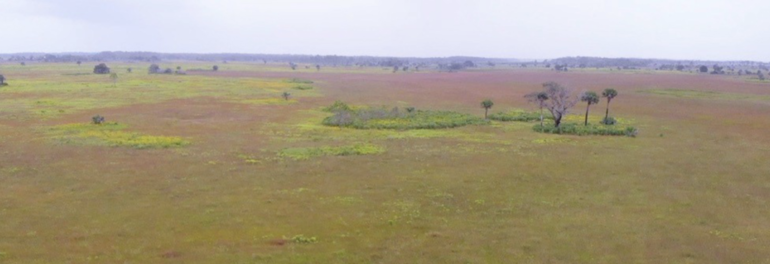Houston, we’re fixing a problem. A University of Florida scientist is leading a project to develop a tool — based on data from satellites — that ranchers can use to improve their pasture and grazing management.
Besides serving as a place for cattle to live, eat and sleep, Florida’s ranchlands also are often large, complex ecosystems that provide food and habitat for wildlife and water to replenish the Floridan aquifer, said Chris Wilson, a UF/IFAS assistant professor of agronomy and agroecologist.
“To get the most efficient use out of their pastures, it will be helpful for ranchers to monitor their biomass and quality,” said Wilson. “They might concentrate grazing in areas with higher growth rates for biomass, for instance.”
Because of the size and complexity of ranchland ecosystems, scientists need tools to help monitor and quantify key ‘vital signs’ — such as the amount of green grass — over large areas where traditional field scouting is impractical, Wilson said.
To gather that large dataset, Wilson and his team intend to use multiple orbiting satellite platforms that can provide decades of historical data alongside periodic updates during each growing season. The satellites are similar to those that track and provide telecommunications and are managed by a variety of private companies and government agencies, including NASA.
For example, Wilson’s team uses Landsat from NASA and Sentinel II from the European Space Agency. To make sense of the large datasets, the team is using a combination of cutting-edge statistical and AI-based models.
His project aims to leverage the satellite data by translating it into reliable metrics of ecosystem performance that ranch managers can interpret and use. To do this, UF/IFAS has partnered with Deseret Cattle and Timber.
Deseret is based in Osceola and Gulf counties, and it has funded Wilson’s graduate student, Hunter Smith, who is co-managing the project with Wilson. Smith is pursuing a doctorate in agronomy through the UF/IFAS College of Agricultural and Life Sciences. He is also completing a graduate certificate in biological systems modeling offered through the UF/IFAS agricultural and biological engineering department.
In addition to Smith, the UF team includes forage agronomist Jose Dubeux, who works at the North Florida Research and Education Center in Marianna and Alina Zare, a UF professor in electrical and computer engineering.
Deseret is also providing Wilson with feedback on the AI-based system, Wilson said.
“This will help steer the project toward a more useful outcome,” he said. “Through this partnership with Deseret, we will build a tool that is both scientifically robust and practically informed. In the long term, we aim to provide this insight to stakeholders through the state, and beyond, in the form of a web portal.”
Ranchers will be able to download estimates of pasture biomass and quality for parcels that UF/IFAS researchers have specified in advance, he said.
“For right now, we are focused on developing a prototype for use by Deseret,” Wilson said. “Once we have brought this preliminary project to a mutually satisfactory conclusion, we anticipate opening it up to ranchers throughout the state.”
For now, much research needs to be done.
“We need to understand how forage grasses vary across fields, between ranches and among different varieties of the grasses themselves,” he said. “Right now, we are focused on Bahiagrass, but we plan to expand to all the commonly utilized forges in Florida.”
For more about UF/IFAS AI efforts, click here.
This story originally appeared on UF/IFAS.
Check out more stories on the UF AI Initiative.

